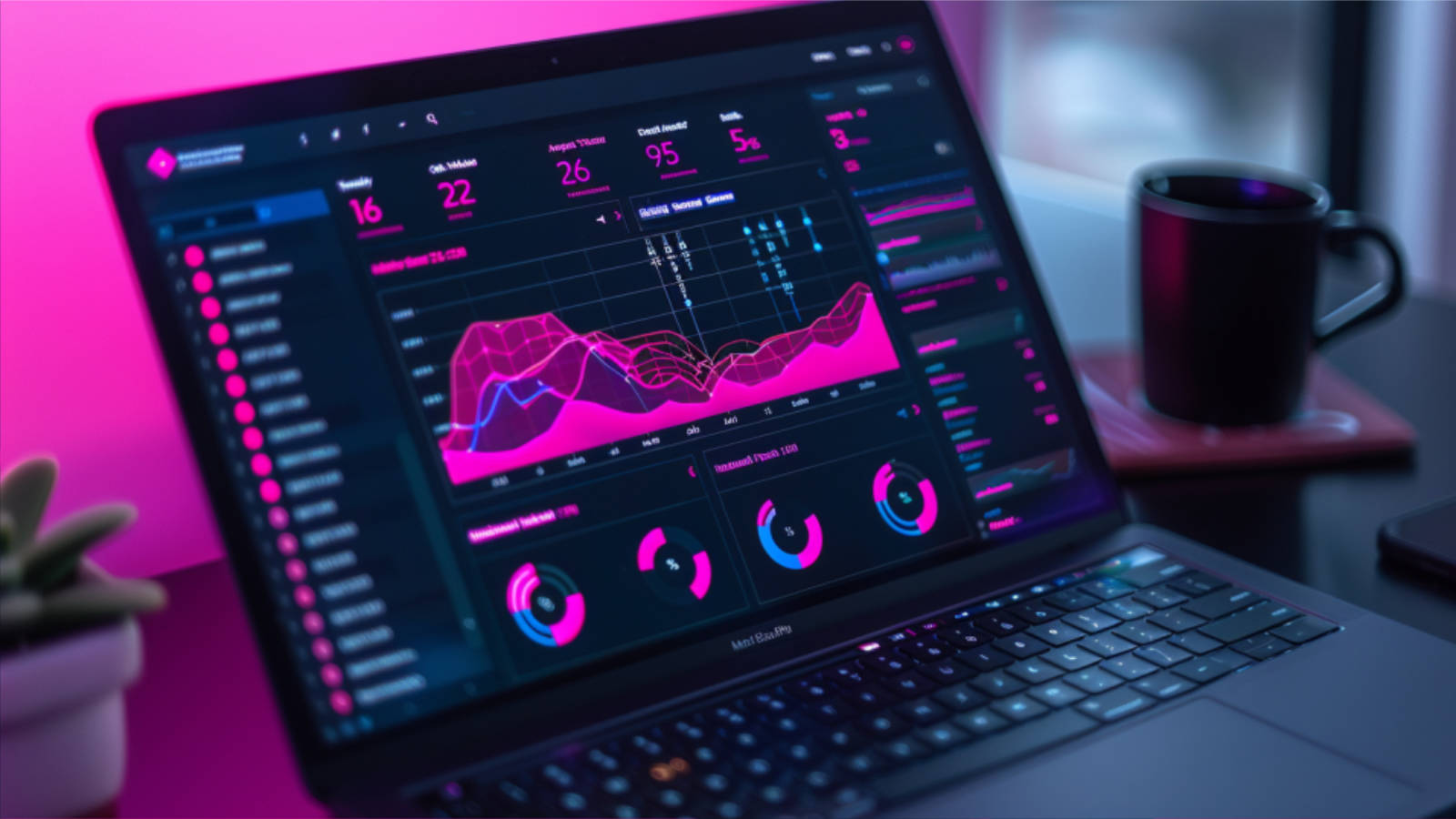Do you ever wonder how some sites end up as the first three results on search engines like Google? WordPress SEO (Search Engine Optimization) is likely responsible for their position, and any website can steal the spotlight with strategic, continuous effort.
Gunning for top billing on search engine results page (SERP) rankings can seem like a quixotic pursuit, but there is a method to the internet’s madness. By learning which WordPress tasks and tidbits propel websites to the top of the hierarchy, your site can give SEO victors a run for their ranking and summit the most coveted SERP positions.
What Does Google Look for to Determine SEO Rankings?
As the leading search engine, SERP rankings are overwhelmingly determined by Google. But what factors does Google consider when deciding who ranks where?
Note: If you already have a solid understanding of SEO ranking factors and want to fast-track to our WordPress SEO Checklist, scroll down to our section on “WordPress SEO Priorities.”
Google relies on a proprietary artificial intelligence system called RankBrain to evaluate user searches and sort the results they display. Since RankBrain was introduced, outré “SEO hacks” —like keyword stuffing and reams of page tags—no longer work to artificially bolster rankings. Nowadays, sites are indexed based on performance, content, and their relevance to user intent.
While SEO today is a much more honest competition, Google intentionally keeps RankBrain’s inner workings sphinxlike. The algorithm is continuously adjusted, and it can be tough for publishers to crack the code.
That said, we do have a few clues as to how RankBrain picks their top contenders. According to Search Engine Journal, the top 5 factors influencing SERP performance are:
- On-page optimization
- High-quality content
- Page experience and speed
- Mobile-first design
- Internal and external links
If you’re here to make off with some quick-and-dirty SEO hacks, we hate to break it to you, but there’s no cheat code for the sophisticated sorting hat that is RankBrain.
Earning a spot in the SERP pantheon takes deliberate, diligent, and perpetual effort. WordPress provides all the tools you need to surge up the rankings ladder at a steady pace—and thankfully, many of them are available for free.
WordPress SEO Priorities
Mastering WordPress’s site setup and configuration is one of the most effective initiatives you can deploy to improve your site’s ranking. These techniques fall into five key categories:
- [#1] Site health and updates
- [#2] Site settings
- [#3] SEO-friendly and performance-optimized theme
- [#4] Site architecture
- [#4] Mobile optimization
Properly configuring your site will make your ongoing SEO management tasks significantly less time-intensive and establish the foundation for long-term SERP success.
#1 Site Health, Updates, and Settings
When you’re just beginning to build a new website, it may be too early to optimize your content for SEO. To that end, your first order of business is to:
- Partner with a reliable hosting provider – The more reliable your hosting provider is, the better your site will perform with visitors. In our experience, there are three flagship providers who are exceptionally dependable in their support, performance, and tenacity as hosts:
- Run the latest PHP version – The more current your PHP, the better your website will run for users. The latest PHP version is 8.1, so be sure to make it your site’s lingua franca to optimize performance speeds
- Install a TLS or SSL certificate – A Transport Layer Security (TLS) or Secure Socket Layer (SSL) certificate secures and encrypts communications. These certificates are available from certificate authorities (CA) and require minimal information to acquire. They’re crucial for obtaining an “HTTPS” web address, which tells visitors—and Google’s SEO ranking algorithm—they can safely visit your site.
If you’re migrating an existing site to WordPress, you’ll want to use the Site Health screen—located in the navigation bar on the left side of your dashboard—or a dedicated Health Check plugin.
These tools will inform you of any necessary fixes preventing you from maximizing performance, availability, security, and SEO results. Once you’ve built your new site, be sure to periodically monitor your site health for ongoing maintenance.
#2 Site Settings—Readability and Permalink Structure
You’ll find one of the most important SEO settings by navigating to “Settings” in your left-hand navigation panel and clicking “Reading.”
This “Reading” setting ensures that Google and other search engines can index your site. However, if you’re in the early stages of page building with WordPress, you may want to hold off enabling it until more content has been published.
Next up is your “Permalink structure,” which refers to the entire website address found in the browser’s address bar.
WordPress’s default permalink uses a simplified structure that’s not (truth be told) the most SEO-friendly. To optimize, you’ll want to use one of two permalink configurations:
- Post name – E.g., https://yourwebsite.com/sample-post/
- Custom structure – E.g., https://yourwebsiste.com/category/sample-post/
Regardless of which permalink structure you start with, WordPress will automatically update them if you change your mind later on.
#3 Choosing a WordPress SEO Optimized Theme
Site themes can be a tricky balance to strike.
Yes, you want to ensure that your theme is on-brand and captivating to visitors—but clunky code or laggy functionality will just wind up slowing things down. And when it comes to SEO, technical performance demerits will cost you (heavily).
To that end, WordPress has 1000s of themes to choose from, making it tough to determine which templates offer the best performance. Fortunately, Search Engine Journal highlighted several criteria you can use when choosing your theme. Make sure you find one that:
- Is mobile-friendly
- Integrates with most plugins for extensive functionality additions
- Passes a “clean code” check from the “Theme Check” plugin, which facilitates faster:
- Load times
- Google crawl speeds and updates (e.g., page ranking assessments and updates)
- Supports multiple browsers, which can be checked on “Power Mapper”
- Simplifies page building by leveraging the native Gutenberg WordPress editor
- Is updated regularly to ensure continued integration optimization and functionality
On the other hand, beware of “kitchen sink” WordPress themes that promise to do it all, as well as themes that rely heavily on page builder plugins.
Ideally, your theme choice—like your hosting provider—is a one-time decision that sets you up for WordPress SEO success moving forward. If you need a bit of guidance with your decision, contact us for a free theme consultation for your new website.
#4 Site Architecture—Organization, Categories, Menus, and Breadcrumbs
There aren’t many actionable items regarding your site’s architecture in the initial stages of development, but it’s paramount to draft a rough sketch of your Categories and their hierarchy.
This will help guide your page-building efforts and create organizational integrity from the outset. As you continue building your WordPress site, you’ll want to periodically check the page organization to ensure it adheres to the architecture you’ve outlined—or whether that architecture needs to be adjusted.
Establishing an intuitive and navigable site structure will help boost SERPs when Google indexes your site. It also helps improve “dwell time” (i.e., how long readers remain on your page), a metric Google uses to determine how much value you’re giving your visitors.
You also want to build out a robust internal linking structure that directs visitors to other pages, especially if they’re looking for supplementary information on a specific term, concept, event, or mention (we’ll break down internal and external links further below).
When you’re organizing your WordPress site’s structure, you want to utilize (in hierarchical order) your:
- Homepage
- “Categories” for broad groups (e.g., Services/Products, Blog, About Us)
- Pages
Your website’s menu should reflect this hierarchy to ensure that your visitors can seamlessly find what they’re looking for. The site’s navigation should never invite confusion.
Additionally, you can configure “breadcrumbs” for on-page display to help them backtrack through the hierarchy (e.g., Blog>June 2022>Blog Title).
For the most seamless navigation, be sure to add “tags” to each page you publish. Doing so allows visitors to search and filter according to those associated with individual pages.
#5 Mobile Optimization and Responsive Design for WordPress Sites
Last year, mobile devices accounted for roughly 54% of all web traffic. So to rank well on search results and provide visitors with an optimal experience, you’ll need to keep mobile optimization and responsive design at the top of your priorities.
To rank well on SERPs and provide visitors with an incredible experience, responsive design—or a website’s adaptability to a variety of device screens and browsing window sizes—needs to be holistic.
Choosing the right theme is the first step in establishing whether or not your WordPress site will render beautifully on an array of mobile devices. After that, make it a point to:
- Simplify menu navigation
- Minimize pop-ups—quantity and size
- Compress images or delay their loading until they’re on-screen (to reduce latency)
- Consider enabling Google’s “Accelerated Mobile Pages” (AMP)
- Regularly check your mobile optimization with plugins or Google’s MF test
Ongoing WordPress SEO Tasks
The SEO priorities detailed above are only “more important” because they should be determined when laying the foundation of a WordPress site. They’re the configurations and settings that largely determine WordPress’ automations and prepopulated information.
Think of the initial priorities as the “foundation layer” and what we’re about to walk you through below as the “application layer.”
That means that the rest of your SEO efforts are cumulative—still incredibly important, but they’ll be less intensive if you can implement them over time. Overall, they include:
- [#1] On-page and pre-publishing tasks
- [#2] Regularly publishing engaging, SEO-optimized content
- [#3] Adding SEO plugins for content
- [#4] Curating your content with updated information
- [#5] Adding images and alt. Text
- [#6] Refining site structure and organization with internal and external links
- [#7] Promoting your website
[#1] On-Page and Pre-Publishing SEO Tasks
As with many endeavors requiring steady, ongoing effort, it’s easier to adopt sound SEO habits when first building your site pages than to retroactively perform updates.
Spending an extra 10-15 minutes on a quick pre-publishing SEO checklist will save enormous time in the long run. So before you push your pages live, be sure to confirm you have relevant and consistent content for the following fields:
- Title tag – The page title search engines will display on their results pages
- Meta description – The snippet providing more context below the title tag
- Permalinks/URL slugs – Your permalink structure will prepopulate based on your configuration, but you may want to customize them per page before publishing (e.g., removing hyphens and conjunctions)
- Categories and tags – To establish site hierarchies and simplify navigation
At the bare minimum, each page should include this data. Thankfully, WordPress provides easy-to-find fields at the bottom of the page builder to do so.
There are also set locations to provide “excerpts,” which can display as direct answers to questions searched on Google and additional information about a page that might influence your internal linking structure (see #6 below).
[#2] Publish Engaging Content—Relevancy, Frequency, and Thoroughness
Your on-page SEO efforts must be accompanied by high-quality content, which you can curate by adding new blog posts and pages to your WordPress site.
When you do, be sure to structure each section’s header based on an intuitive hierarchy—and only use one H1 so that Google clearly recognizes the title of the page.
Length plays a factor in how your blog articles rank, but topic relevancy, posting frequency, and information thoroughness will affect your SERP performance even more. Short pages can rank highly if the content is robust.
Further, you don’t have to publish new articles daily. It’s more important to find a frequency that works best for your company’s schedule (e.g., weekly, monthly). To that end, Google will recognize that newly published content and reward you with higher placement.
[#3] Add an SEO Plugin for Content
Among the thousands of WordPress plugins available, some SEO guides will help you write content likelier to rank higher on search engines. The free version of SEO plugins, like Yoast and AIOSEO, can provide everything you need to perform basic SEO content optimization.
Technically, adding an SEO plugin should be one of the first implementations alongside the SEO priorities outlined above—you’ll be interacting with the plugin every time you build a new page and write more content for your WordPress site.
These SEO plugins remove a substantial amount of guesswork from writing and publishing SEO-optimized pages, allowing you to quickly build a site-wide content foundation that will likely rank higher upon your first or next indexing.
These plugins will automatically fill or suggest titles, metadata, and more to help streamline your pre-publishing checklist, along with providing scores on readability and optimal keyword presence. They also offer streamlined social media post formatting and publishing.
Between your initial indexing and developing sound SEO habits, SEO plugins offer a headstart as you endeavor to achieve first-page rankings.
[#4] Updates and Evergreen Content
In addition to posting frequency, periodic page updates affect how Google ranks your site. When Google recognizes page updates during each indexing, it acknowledges your active curation efforts to keep the on-page information relevant to your visitors.
Sometimes page updates are as easy as 1-2-3.
For example, suppose there’s an upcoming event relevant to your company’s audience. On the same web page, you could announce it, then later update that published content with more information as it becomes available (e.g., schedules, venue changes, an image gallery).
However, these pages might be difficult to update in perpetuity, as they’re specifically relevant to set dates and times. Pages covering news, trends, and events like this are considered “timely content.”
In contrast, you also want to ensure your WordPress site contains pages with “evergreen content”—or information that remains relevant regardless of when the initial publishing occurred. These types of pages provide an opportunity to periodically make minor updates that further boost rankings. Examples of evergreen content include:
- Your “About Us” pages
- “101” or “What is?” blog articles and similar primers for unfamiliar audiences
- Everyday advice
[#5] Images and Alt. Text
Alongside written content, you want to enhance your pages with images. Not only do they engage visitors, they’re another consideration that Google accounts for when crawling and indexing your site.
To that end, on-page images reinforce topic relevancy and help you rank well for image searches. And when building pages with images, there are some essential to-dos to remember.
Every time you upload a new image into your WordPress image library, be sure to provide a title and alternative text (“alt. text”). If images fail to load, alt. text will appear in their place, preserving site performance during indexing.
Descriptive names and alt. text help Google build new associations based on people’s searches and are far more likely to place top results for a relevant topic.
These tasks don’t take much time after each image upload, but adding them retroactively can be a massive hassle. Additionally, providing specific image names allows you to search for those you’ll frequently reuse across your site.
[#6] Internal and External Linking
Links embedded in your content can bolster site authority, especially when they direct to robust, highly regarded pages. And when it comes to this practice, links are typically divided into two categories:
- Internal links – Directing visitors to another page on your website (or an “anchored” location somewhere else on the same page)
- External links – Directing visitors to another website’s page
Internal links demonstrate an easily navigable site and a deep repository of relevant information. WordPress makes it easy to add them by searching for page names rather than forcing you to remember—or find—the exact URL.
External links also help SEO performance, but the most coveted are “backlinks” that direct visitors on other sites to yours (essentially having a traffic hub that’s linking out to your brand).
Backlinks can be created with SEO strategies utilizing “third-party placement”—like thought leadership pieces or interviews hosted on other publications.
The more you publish authoritative, relevant, and informative content on your site, the more backlinks you’ll generate—other sites will want to link to yours or cite your authored content.
[#7] Promotion—Social Sharing for Organic Boosts and Paid Placement
Lastly, when it comes to content, if you aren’t self-promoting across your social media channels, you’re doing yourself a major disservice. You can promote your SEO-optimized pages at no cost by posting from your own handles to help drive organic traffic to your site.
When Google sees high volumes of organic traffic, it ascribes greater domain authority to your site, giving a lift to your SERP rankings. Social media sharing is a way to potentially climb a few more spots further up on Google’s results.
Alternatively, you can create a budget for promotion, with search engine social ads linked to specific keywords or interests.
Utilize Straightforward and Simple SEO Strategies with SiteCare
Adhering to a diligent SEO strategy with the accessible efforts outlined above will help any website gradually perform better with its SERP rankings.
Alas, significantly bolstering your site’s SEO requires expert insight into various nuances, keywords, and changing algorithmic criteria that determine where you rank.
Anyone can start improving their WordPress site’s SEO, but SiteCare is here when you want to elevate beyond the basics.
Our team of WordPress experts will help you manage your site on the backend while providing data-driven SEO advisory ranging from suggested keywords to implementing structured data on every page and beyond.
Contact us today to start climbing SERP rankings with haste.




Leave a Reply